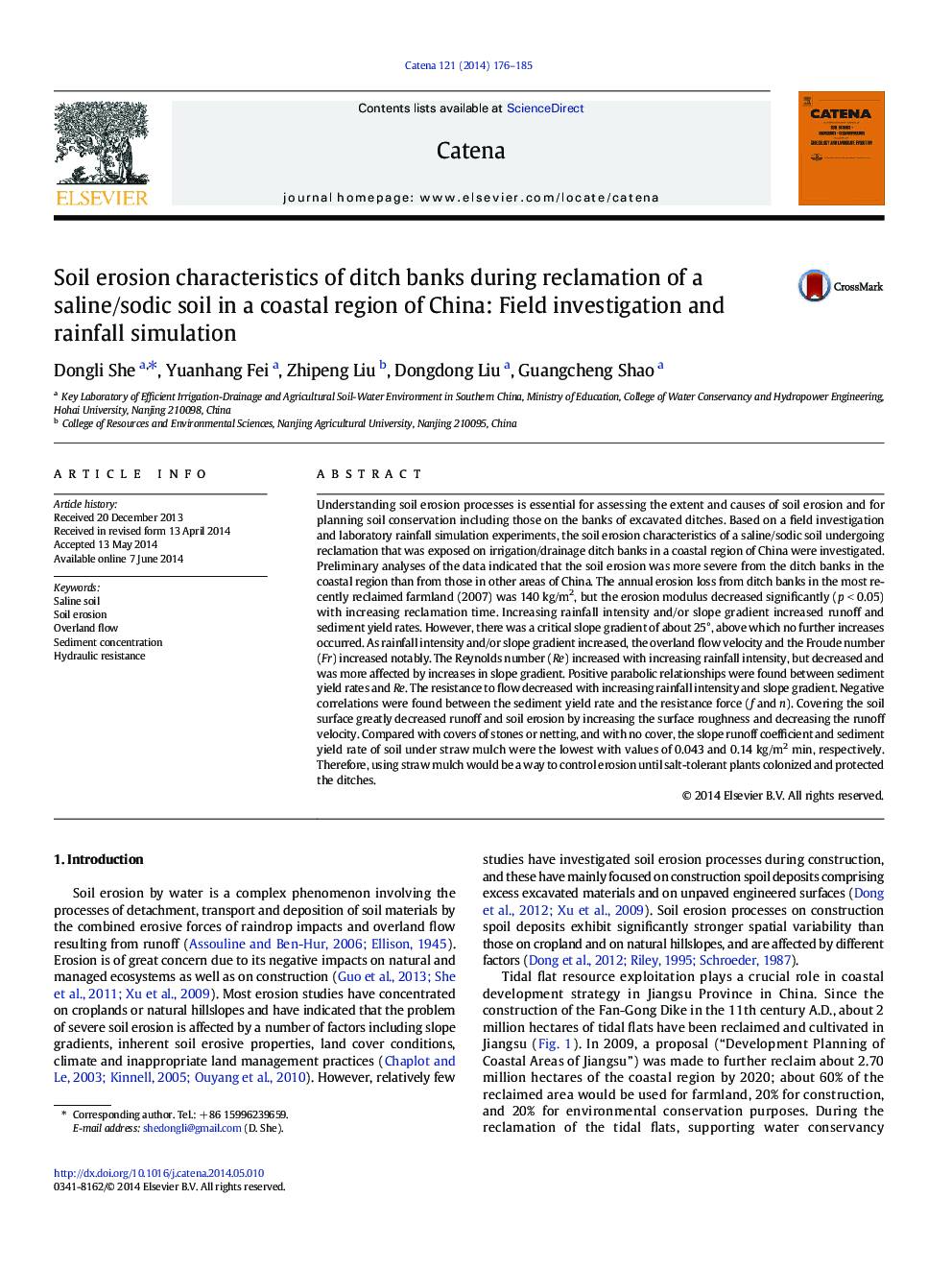| Article ID | Journal | Published Year | Pages | File Type |
|---|---|---|---|---|
| 4571313 | CATENA | 2014 | 10 Pages |
•Soil erosion characteristics of a saline/sodic soil undergoing reclamation were investigated.•Soil erosion was more severe from the ditch banks in the coastal region than from those in other areas of China.•Increasing rainfall intensity and/or slope gradient increased runoff and sediment yield rates.•Straw mulch is the most effective way to control soil erosion on the ditch banks.
Understanding soil erosion processes is essential for assessing the extent and causes of soil erosion and for planning soil conservation including those on the banks of excavated ditches. Based on a field investigation and laboratory rainfall simulation experiments, the soil erosion characteristics of a saline/sodic soil undergoing reclamation that was exposed on irrigation/drainage ditch banks in a coastal region of China were investigated. Preliminary analyses of the data indicated that the soil erosion was more severe from the ditch banks in the coastal region than from those in other areas of China. The annual erosion loss from ditch banks in the most recently reclaimed farmland (2007) was 140 kg/m2, but the erosion modulus decreased significantly (p < 0.05) with increasing reclamation time. Increasing rainfall intensity and/or slope gradient increased runoff and sediment yield rates. However, there was a critical slope gradient of about 25°, above which no further increases occurred. As rainfall intensity and/or slope gradient increased, the overland flow velocity and the Froude number (Fr) increased notably. The Reynolds number (Re) increased with increasing rainfall intensity, but decreased and was more affected by increases in slope gradient. Positive parabolic relationships were found between sediment yield rates and Re. The resistance to flow decreased with increasing rainfall intensity and slope gradient. Negative correlations were found between the sediment yield rate and the resistance force (f and n). Covering the soil surface greatly decreased runoff and soil erosion by increasing the surface roughness and decreasing the runoff velocity. Compared with covers of stones or netting, and with no cover, the slope runoff coefficient and sediment yield rate of soil under straw mulch were the lowest with values of 0.043 and 0.14 kg/m2 min, respectively. Therefore, using straw mulch would be a way to control erosion until salt-tolerant plants colonized and protected the ditches.
